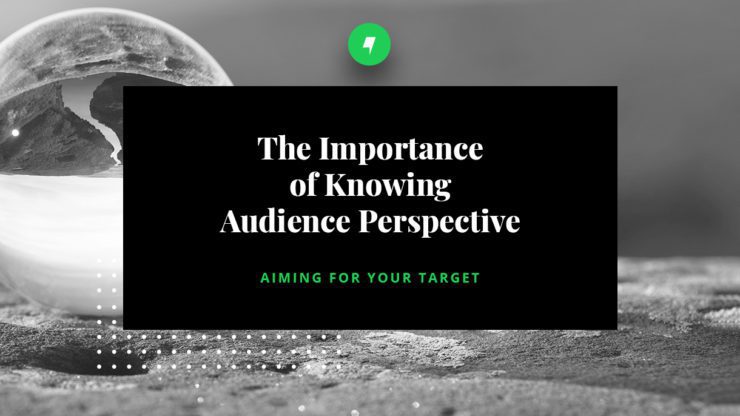It’s natural to assume that your view of the world is how most others see it too.
As citizens of Western culture, we are encouraged to be individuals, which can sometimes make it difficult to understand someone else’s point of view. We live in a selfie world, where most people consider their own personal brand above all else when posting to social media. We read articles that confirm our personal points of view. We tend to socialize with people who share our same political affiliation and world view.
But we know that it can be dangerous to make assumptions about other’s perspectives.
In communications, these assumptions may mean sharing messages that are totally off base from what target audiences want or need to hear and can be harmful (loss of business), to devastating (loss of reputation). Here are three instances where appreciating audience perspective is essential for success.
Proposal writing
Although I’m more often on the writing end of proposals, I’ve had my fair share of being on the receiving end, and I can tell you that I’ve seen some bad ones. One of the most bothersome things I see is when a company starts off (and goes on for many pages) talking about themselves. Yes, knowing the company’s capabilities and credentials is important, but certainly not more important than communicating that they understand my business and my needs. As a perspective buyer of your services I’m much more receptive when I know you understand my pain points. A better way is to craft a proposal from the perspective of your potential client. Let them know up front that you understand their business and how you will address their specific needs. Hook ‘em in the beginning and save the flashy resume stuff for the end.
Blog post writing
Knowing what’s important to your target audience is the single most important element in content creation. What are your target audience’s concerns, drivers, and motivators? When you can answer those questions, only then do you fully understand where they’re coming from and can write from an angle that is appealing to them. The end message (buy my product, go to my website, download my whitepaper, etc.) may be the same, but the way you get there is totally dependent on understanding perspective.
Media pitching
This is one that you learn early on in any PR career. The first time you’re yelled at by a reporter is usually the moment you realize you didn’t approach it from their perspective. Crafting a pitch to take into consideration why a reporter, and more importantly, that reporter’s readers, might be interested in the topic is the single most important element of a pitch.
Taking the time to research and understand another’s perspective, especially when your intent is to have that person or group of people listen and take action, is essential when crafting communications. Without it you’re just producing a lot of background noise.
Posted In Public Relations
 Jessica Sharp
Jessica Sharp 